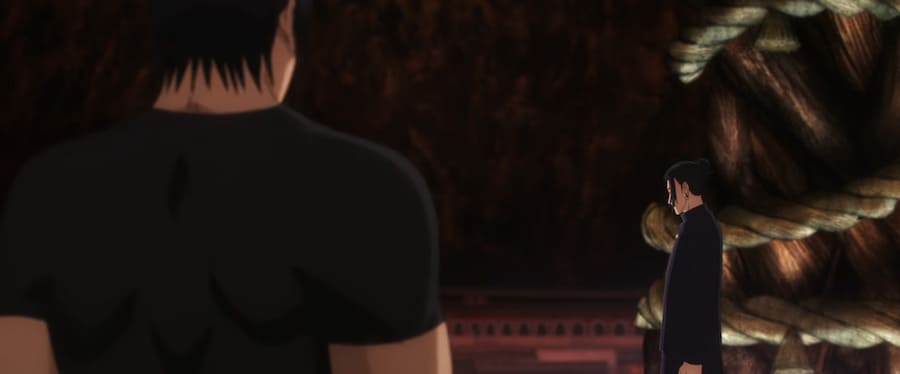In this article, I will explain Japanese grammar and vocabulary based on Toji Zenin’s line “五条悟はおれが殺した”. Let’s have fun learning Japanese through Jujutsu Kaisen!
The Basic Information of The Line
The basic meaning
in Japanese: “五条悟はおれが殺した”
in Hiragana: “ごじょうさとるはおれがころした”
in Romaji: “Gojo Satoru ha ore ga koroshita”
Meaning: “I killed Satoru Gojo.”
The situation in which the line was spoken

This is a line from Toji Zenin. After fighting with Satoru Gojo, Toji Zenin went to Suguru Geto. Suguru Geto was very surprised because Toji Zenin, who was supposed to be fighting with Satoru Gojo, came to him. This is because he thought Satoru Gojo, being the strongest, could not possibly lose. Seeing the shocked expression on Suguru Geto’s face, Toji Zenin said, “I killed Gojo Satoru.”
Grammatical Structure
五条悟 (ごじょう さとる / Gojou Satoru)
Gojou Satoru is a character from the manga and anime series “Jujutsu Kaisen.” He is a powerful jujutsu sorcerer and a teacher at the Tokyo Metropolitan Curse Technical College (also known as Jujutsu High School). Gojou is known for his exceptional skill and is considered one of the strongest sorcerers in the series.
は (wa)
This is the topic marker in Japanese. It’s used to indicate the topic of the sentence, which is “Gojou Satoru” in this case.
おれ (ore)
This is a first-person pronoun, meaning “I” or “me.” It’s a casual and masculine way to refer to oneself, often used by males to indicate assertiveness or confidence.
が (ga)
This is the subject marker in Japanese. It’s used to specify the subject of an action, which is “I” or “me” in this case. The presence of both “は” and “が” in this sentence is common in Japanese to emphasize or clarify the subject and the topic.
殺した (ころした / koroshita)
This is the past tense of the verb “殺す (korosu),” meaning “to kill.” So, “殺した” means “killed.”
General Use in Everyday Conversation
Casual Usage
The structure of the sentence “五条悟はおれが殺した” can be generalized as:
“[Topic] は [Subject] が [Verb in past tense]”
In casual conversations, you might hear:
- アイスクリームは私が食べた
(“Ice cream wa watashi ga tabeta”) – “I’m the one who ate the ice cream.” - その本は彼が読んだ
(“Sono hon wa kare ga yonda”) – “He’s the one who read that book.”
Polite Usage
In a more formal or respectful setting, the verb would typically be in its polite form, and the pronouns would also change to be more polite.
Using the previous examples but making them polite:
- アイスクリームは私が食べました
(“Ice cream wa watashi ga tabemashita”) – “I am the one who ate the ice cream.” - その本は彼が読みました
(“Sono hon wa kare ga yomimashita”) – “He is the one who read that book.”
In addition, when using keigo, the choice of pronouns might differ. For instance, “私 (watashi)” is more neutral than “おれ (ore)”, so it’s often preferred in polite contexts.
In essence, the structure of the sentence remains the same in both casual and polite usage, but the verb form and choice of pronouns may change based on the level of formality desired.









Related articles